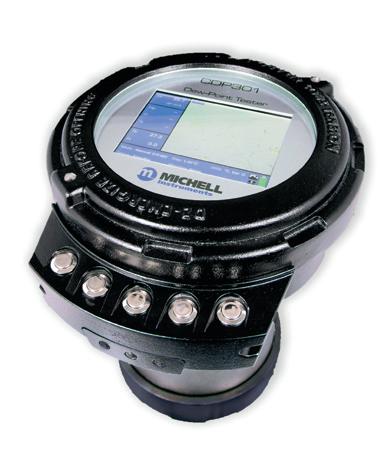
12 minute read
Soft robots with good sense
Soft robots have potential in the food industry but have been limited due to their lack of good sensing. Now researchers from MIT’s Computer Science and Artificial Intelligence Laboratory (CSAIL) have developed new tools to let a soft robot feel what it is touching (tactile sensing) and sense the positions of its fingers (proprioception).
“Soft robot hands have sensorised skins that allow them to pick up a range of objects, from delicate, such as potato chips, to heavy, such as milk bottles,” said CSAIL Director Daniela Rus, the Andrew and Erna Viterbi Professor of Electrical Engineering and Computer Science and the deputy dean of research for the MIT Stephen A. Schwarzman College of Computing.
The researchers reported in two papers: One paper builds off last year’s research from MIT and Harvard University, where a team developed a soft and strong robotic gripper in the form of a cone-shaped origami structure. It collapses in on objects much like a Venus flytrap, to pick up items that are as much as 100 times its weight.
To get that newfound versatility and adaptability even closer to that of a human hand, the team came up with a sensible addition: tactile sensors, made from latex ‘bladders’ (balloons) connected to pressure transducers. The new sensors let the gripper not only pick up objects as delicate as potato chips, but it also classifies them — letting the robot better understand what it’s picking up, while also exhibiting that light touch.
When classifying objects, the sensors correctly identified 10 objects with over 90% accuracy, even when an object slipped out of grip.
“Unlike many other soft tactile sensors, ours can be rapidly fabricated, retrofitted into grippers, and show sensitivity and reliability,” said MIT postdoc Josie Hughes, the lead author on a new paper about the sensors. “We hope they provide a new method of soft sensing that can be applied to a wide range of different applications in manufacturing settings, like packing and lifting.”
In a second paper, a group of researchers created a soft robotic finger called GelFlex that uses embedded cameras and deep learning to enable high-resolution tactile sensing and “proprioception” (awareness of positions and movements of the body).
The gripper, which looks much like a two-finger cup gripper you might see at a vending machine, uses a tendondriven mechanism to actuate the fingers. When tested on metal objects of various shapes, the system had over 96% recognition accuracy.
“Our soft finger can provide high accuracy on proprioception and accurately predict grasped objects, and also withstand considerable impact without harming the interacted environment and itself,” said Yu She, lead author on the GelFlex paper. “By constraining soft fingers with a flexible exoskeleton, and performing high-resolution sensing with embedded cameras, we open up a large range of capabilities for soft manipulators.”
Enmin’s Australian-made equipment provides customised solution
For more than 40 years, Victorian-based Enmin has been building custom vibratory and material handling solutions for a myriad of applications and environments.
Enmin General Manager Anthony Gallaher notes several benefits with Enmin’s locally made equipment, including the ability to offer individual design and customisation, expert local advice, consistency of supply and outstanding backup and support. The company also supports other local manufacturers, purchasing 304 stainless steel, various steel and plastic machined parts, castings, coils and electrical components as well as outsourcing its laser cutting, all domestically.
Customisation is an important part of the Enmin business. In a recent example, a hopper feeder was required where the depositing system dictated a height that would be unergonomic for the production line staff to easily and safely access the storage hopper.
“Using our design expertise and state-of-the-art software, we designed a mobile unit with retractable operator steps. When not required, these steps can be folded out of the way quickly and with very little effort thanks to pressurised struts on each side,” Gallaher said.
“Another benefit of being a local manufacturer is being able to see first-hand a customer’s existing production line set-up to ensure our equipment will integrate seamlessly with other components already in place. We can ensure that mechanical components fit with minimal or no modifications and electrical interfaces are all talking to each other.”
“There are many pieces of non-branded equipment brought in from overseas and these often need replacement parts; this is where our knowledge and expertise also comes into play to ensure that the right part is specified,” Gallaher continued.
“And, of course, being a local manufacturer means we are only a quick phone call away to immediately respond to any customer query or provide service and parts support throughout Australia,” he added.
Enmin also invests in R&D to provide Australian manufacturers with the latest developments in materials handling solutions and improve production efficiencies.
An example of this is Enmin’s design and development of a range of modular components. “The key benefit of modular components is that it eliminates equipment redundancy and expands with the customer’s business. It can be added to, extended and modified in the years ahead as a company’s production needs evolve,” Gallaher said.
Enmin’s range of product handling and vibratory equipment includes the Mi-CON modular conveyor — a hygienically designed full washdown system with multiple standardised components — and a range of hopper feeders and screeners, spiral conveyors, conditioning conveyors and more.
“All our products are designed and constructed first and foremost to meet the rigorous requirements of the food and pharmaceutical industries such as maximum hygiene, ease of cleaning and the reliability essential to meet the demands of continuous 24/7 operation,” Gallaher said.
Enmin also has a range of industrial vibrators to suit any industry that handles bulk material.

Enmin Pty Ltd www.enmin.com.au
Stainless steel plumbing
Food manufacturing businesses often rely on plumbing to maintain their essential daily operations. Copper piping has been used for decades, but it is an expensive plumbing option due to the necessary involvement of qualified welders and time-consuming installation.
Surepress press-fit systems can offer the same long-term usage and maintenance as copper. In addition to the high-quality components in 304 or 316L stainless steel, the completed systems are aesthetically pleasing and also claimed to be stronger and highly resistant to ageing, heat and chemical additives.
The systems are fast to install and do not require a qualified welder at any point in the process, resulting in less inconvenience to businesses. This also means future changes or maintenance to the system can be completed easily, with minimal disruptions to business operations experienced.
Allmach PFS Pty Ltd
www.allmach.com.au
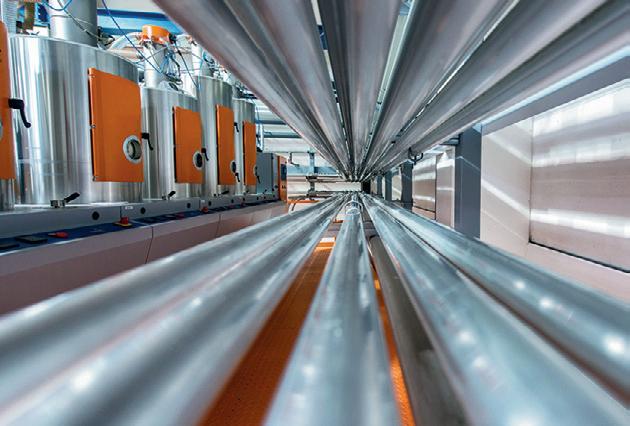
Enabling process optimisation with optek inline control

For over 30 years, optek has focused on measuring process liquids through its interaction with light in facilities all over the world. Although global, optek remains a family-owned company with a team of more than 100 qualified, customerdriven professionals. With the expertise of more than 30,000 installations worldwide, the company’s value to the customer resides in providing a superior product that pays back. Highquality materials withstand the toughest process conditions including aggressive media, high temperature, and high-pressure applications.
Cleanability is ensured using high-quality wetted materials, superior design, as well as sapphire optical windows. As a global partner to various industries, optek offers advanced technologies including superior signal amplification, inline calibration support, PROFIBUS PA, FOUNDATION Fieldbus and multilingual user interfaces for easy onsite operations. The company’s support provides long-term satisfaction with programs such as “Speed-Parts” and “SwapRepair” to provide sustainable operations and minimised downtime at a low cost of ownership. Colour measurements Process colour measurements of liquids are critical in maintaining precise process control and meeting product quality specifications. Colour changes indicate other process variables such as overheating, dilution ratios, dissolved impurities and finished product appearance. Monitoring colour inline using optek photometers enables precise, real-time control of colour dosing, colour removal or colour avoidance. Dual wavelengths Selected combinations of optical filters make it possible to focus on specific wavelengths ensuring suitable adaptation to the application. The AF26 is equipped with a beam splitter making it possible to measure two wavelengths simultaneously. The second wavelength can be used to compensate for (varying) background turbidity. Subtracting the absorbance signal of the reference channel from the primary, visible channel signal gives a pure colour measurement. Using the C4000 converter, the measured value is easily correlated to any required unit, such as APHA/Hazen, Saybolt, ASTM, ASBC, EBC, ICUMSA or others. The converter displays the measurement locally and transmits the signal to a PLC or DCS using analogue outputs or PROFIBUS PA communication or FOUNDATION Fieldbus. Concentration measurement The measurement is represented in concentration units (CU) at a given wavelength and relates to the concentration of constituents in question that interact with light. Process optimisation The detection of impurities, reduction of product losses and the real-time assurance of product quality can be obtained by the use of inline photometers. In addition, inline photometers greatly reduce laboratory and production costs, eliminate human error and prevent environmental damage. Clean-in-place (CIP) Many manufacturing facilities require CIP systems to clean tanks, pumps, valves, filters, heat exchange units as well as the process piping. The use of CIP increases plant efficiency, improves safety and ensures product quality. However, achieving these benefits requires monitoring and control of the
© Stock.Adobe.com/au/ Rido
CIP process to optimise heat, cleaning agents and water consumption. CIP optimisation Precise process interface detection with a single channel NIR absorption based photometer (optek AF16-N or AS16-N) is typically installed at the CIP return points where it is beneficial to measure the exact interface on rinse water. Inline photometers can also be used to monitor the sanitiser concentration to control the CIP process, for validation routines, and in some cases, to monitor the residual after cleaning. Sanitiser concentration Chemical concentration has always been a difficult measurement using traditional conductivity sensors. Changes in pH, temperature, or other unexpected compounds can all affect conductivity devises. To compensate for these issues, plant operators often overdose chemicals to ensure adequate sterilisation, then extend line flushes to ensure it is removed. Sanitiser optimisation By installing an optek UV/VIS or NIR absorption sensor on the feed line, exact concentrations are monitored, optimising performance, while reducing chemical usage. These sensors are also compensated to eliminate any influence from turbidity or the presence of other compounds. In addition, with immediate response times, sanitiser and water usage is greatly reduced.
AMS Instrumentation & Calibration Pty Ltd www.ams-ic.com.au
Ice cream filling and rotary moulding line
The Tetra Pak ice cream filling line is designed for producing up to 45,000 ice cream cone and cup products per hour. The machine is versatile and able to produce four different varieties on up to 12 lanes simultaneously. It can be used to make a range of ice cream cone and cup products — including flat- and ball-top cones, cups and tubs in multiple shapes and sizes, and logs and cakes in different formats.
The product’s numerous filling architectures include side-by-side filling, tulips, flames, chocolate curls, windmill-style filling, nuts, sauces, liquid chocolate, chocolate discs and pencils. When run at the highest capacity, the machine’s automated changeovers support fast run switching, with automated supply systems for cups and lids designed for maximum output.
The machine’s Big Drum Choice Filler enables cone and cup filling. Flexible in switching between multiple products, it allows users to configure capacity and product range to suit need. Its compact modular design can save floor space and facilitate upscaling. Smooth product repeatability allows all products to look homogenous. The machine also features low waste rates of 1.5% for cones and 2% for cup lines. Its ergonomic design provides food safety and prioritises operator health and safety.
Tetra Pak’s medium-capacity rotary moulding line for ice cream sticks allows manufacturers to produce a variety of stick ice cream products. Built around the Tetra Pak Rotary Moulder, the line is capable of performing everything from moulding to filling. A range of dry dosing options allows users to improve production.
Its rotary moulding technology allows users to expand into more complex value-added products, while providing the necessary creaminess as extrusion. The easily upscalable line allows users to start with a limited investment and expand over time. Multiple automated features and advanced filling options, including bottom-up filling with built-in CIP, are designed to extend plant run time for maximum yield and output.
Tetra Pak Marketing Pty Ltd
www.tetrapak.com/au
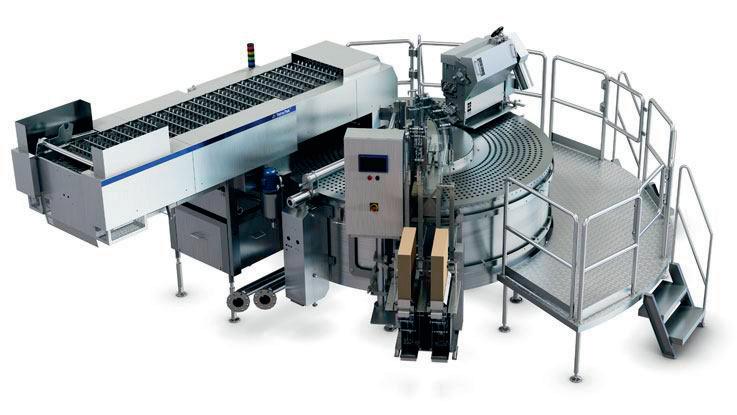

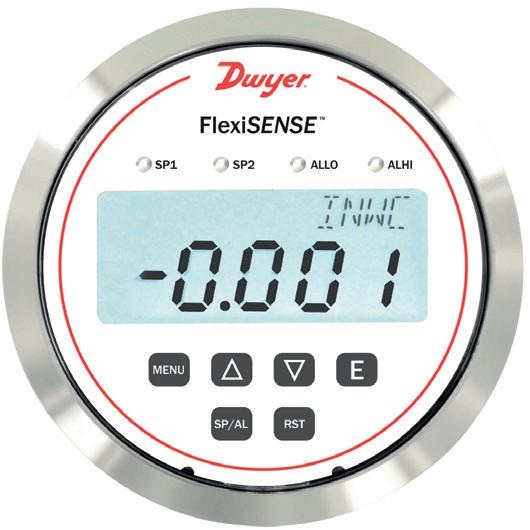
Room pressure monitor
The series RPME FlexiSENSE Room Pressure Monitor is designed for low differential pressure applications that require stringent pressure monitoring and alarming.
The room pressure monitor can be configured to monitor positive or negative pressure in protected environments and clean manufacturing areas. It is a complete system with a fixed segment LCD which enables access to pressure, security, calibration and alarm set-up. It also has a brushed stainless steel bezel that allows for easy cleaning.
The device has built-in status indication LEDs that will appear green when within the user-defined pressure set range and will appear orange when outside of the pressure set range. Two SPDT independent control relays with adjustable deadbands are also provided along with a 4–20 mA process output.
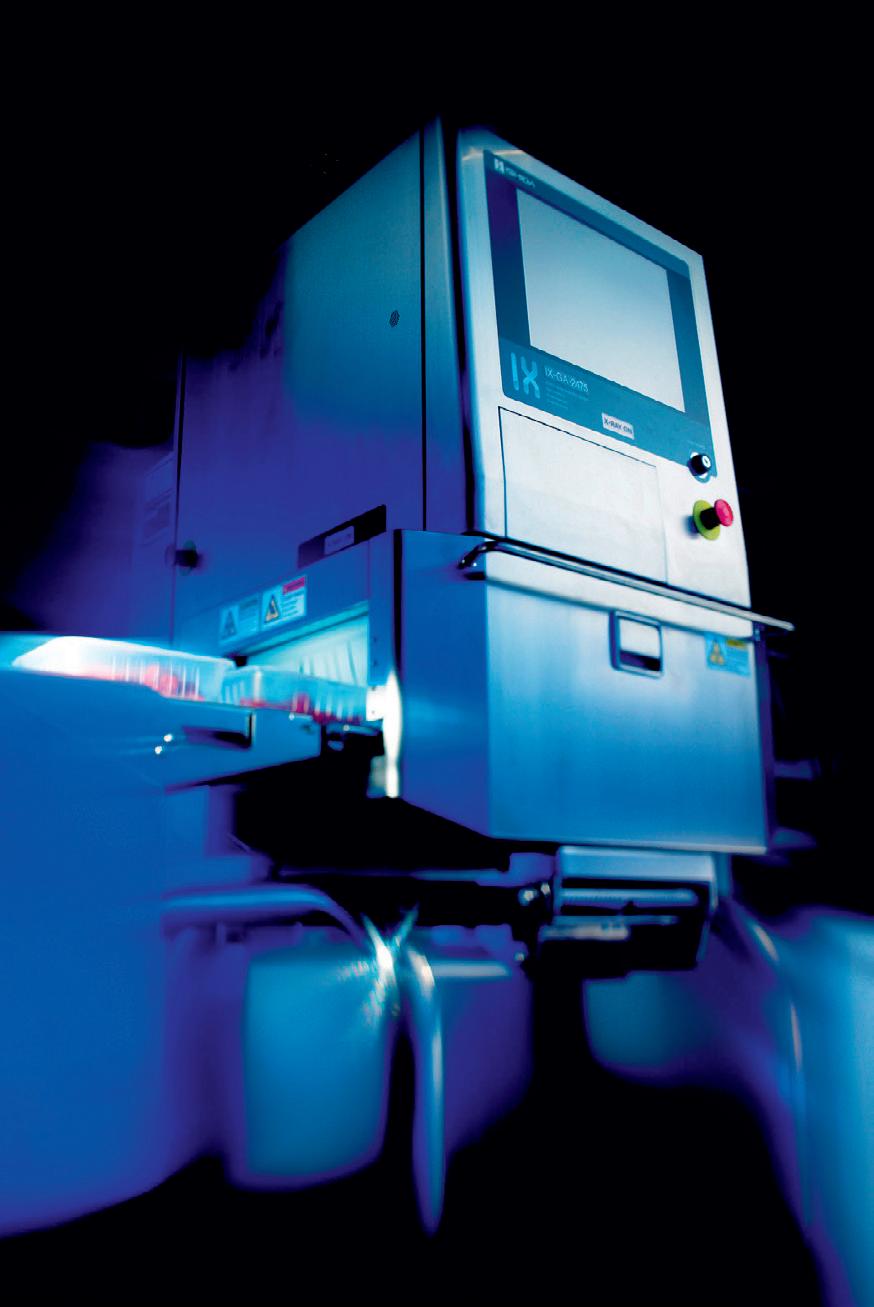
Dwyer Instruments (Aust) Pty Ltd
www.dwyer-inst.com.au
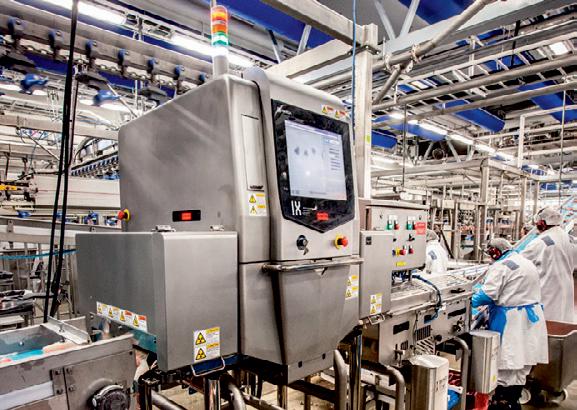
Dew-point tester
The Michell CDP301 portable HCDP tester from Michell Instruments uses the chilled-mirror principle for hydrocarbon and water dew-point measurements, and is designed to follow the requirements as described in ASTM D1142. Based on the visual manual method of observing the formation of condensate, the CDP301 uses a high-definition visual image to assist users and allows image capture and logging of measurements for later review.
The product uses a cooled/chilled mirror dew-point measurement principle, with an automatic mirror cooling rate control according to ISO 6327 and ASTM D1142 test methods for natural-gas dew-point measurements. The product features a colour LC display, with visual identification of water and hydrocarbon dew-point. It is self-contained and powered by a rechargeable battery. The dew-point tester is also Exd certified IECEx ATEX Zone 1 IIB+H2 T3, with better than ±0.5°C accuracy of mirror surface measurements. The product has a 100 barg operating pressure rating and greater than 60°C measurement depression range (up to 100 barg pressure).
AMS Instrumentation & Calibration Pty Ltd
www.ams-ic.com.au
